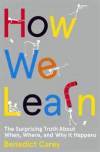What's so hard about de-stressing?
 Wednesday, March 8, 2017 at 2:54PM
Wednesday, March 8, 2017 at 2:54PM Think of a task you’re facing that gets you out of your comfort zone. Perhaps it’s filling an online application, replacing the sink in your bathroom, climbing a rock, cooking a Thai dinner, or picking up the phone and calling your legislator to voice your opinion about current matters. Listen to your body, watch your breathing. Don’t concern yourself right now with the eventual results, just with that knot in your stomach, the feeling of incompetence, the distractions (“Maybe I’ll wash the dishes first and then come back to this.") Beat yourself up for a little while. If you’re counting on asking a friend to help, does this make you feel worse about yourself? Now think of a task that you feel completely at ease with, perhaps filling an online application, replacing the sink in your bathroom, climbing a rock, cooking a Thai dinner, or picking up the phone and calling your legislator to voice your opinion about current matters. Piece of cake. Do you tap yourself on your back because you can do it? Quite possibly not.
I could go from here to asking you to not judge yourself or others. I could point out that our expectations of ourselves and of others dictate when we, or they, feel competent or not. Maybe I’ll do that some other time. Where I want to go today is to that physical feeling of anxiety. The protective posture, the indigestion, the shallow breathing or the drying of the mouth.
It won’t help to ask you to “take it easy”.
There are many ways to get out of the “fight or flight” mode because there are so many ways to get into it. When the stressors differ, the solutions may need to be different too.
Perhaps climbing a rock is hard because it makes you dizzy. There could be other reasons, of course. Suggesting that you run around the block to ease your tension may not help.
Perhaps cooking a Thai dinner is hard because you’ve injured your fingers before when cutting veggies. Suggesting that you relax yourself by knitting may be unappealing.
Perhaps calling your legislator is hard because your auditory processing, especially over the phone, is challenging. Listening to a meditation tape may not be helpful at all for winding down.
Maybe filling an online application is hard because your eyes don’t team well, in which case relaxing by reading a good book may not be your first choice.
Perhaps replacing the sink in the bathroom (and the cabinets and their handles and the faucet and the plumbing, ugh, don’t ask) is tricky because you have a hard time planning ahead or following step-by-step directions. Maybe what you really need to wind down is a massage and not to sit on the porch with a logic puzzle.
All of us, at every level of function, can become anxious with certain tasks because something about how our bodies and nervous systems work – the senses, physical coordination, balance, brain communication – isn’t efficient. We can relieve the tension by avoiding projects that challenge us, by finding ways to wind down without further tasking those areas of challenge, or by gently supporting those functions that aren’t working well. The detective work involves learning about what’s hard as well as what is easy.


